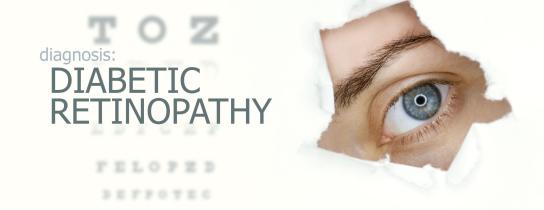
An Overview of Diabetic Retinopathy
November is Diabetes Month, when we can take the opportunity to increase awareness of the struggles some people with diabetes face. People with diabetes often suffer from other accompanying disorders. One of these conditions is diabetic retinopathy. It is important that people with diabetes understand what diabetic retinopathy is, its symptoms, and current treatment.
What Is Diabetic Retinopathy?
Diabetic retinopathy is one of many diabetic eye diseases caused by factors associated with diabetes and its symptoms. The condition is caused by high blood sugar levels damaging the blood vessels in the retina or the light-sensitive part of the eye. This damage can cause the blood vessels to leak or close completely, preventing oxygen-rich blood from reaching your retina cells. It can also result in the growth of new, abnormal blood vessels on the retina, damaging your vision.
Diabetic retinopathy is the most common cause of vision loss for people that have diabetes, and it’s the leading cause of blindness in the U.S.1
Causes of Retinopathy
The main cause of diabetic retinopathy is high blood sugar levels caused by diabetes. Sugar can block the tiny blood vessels in the retina, causing them to leak fluid or bleed, resulting in even more damage to your vision.
Other than elevated blood sugar, there is a range of risk factors associated with developing diabetic retinopathy, including:
- High blood pressure
- High cholesterol
- Abnormal blood vessels in your eye
- Using tobacco
Stages of Diabetic Retinopathy
There are four common stages of diabetic retinopathy, including:
- Mild nonproliferative retinopathy: This is the first stage of diabetic retinopathy. The small blood vessels in your eye start swelling and leaking slightly, causing microaneurysms that can distort your vision.
- Moderate nonproliferative retinopathy: As the disease progresses, the blood vessels in your retina change shape and swell even more. This can change the appearance of your retina and trigger further issues with your vision.
- Severe nonproliferative retinopathy: More and more blood vessels get blocked, forcing your body to start growing new blood vessels on your retina.
- Proliferative diabetic retinopathy: This is the final and most advanced stage of diabetic retinopathy, where new blood vessels grow into your retina and eyeballs. These new, fragile blood vessels are even more likely to leak, causing scar tissue formation and possible retinal detachment. Both of these effects can lead to permanent blindness.
What Are the Symptoms of Diabetic Retinopathy?

A range of symptoms appear in various stages of retinopathy. Signs in the early stages are typically more subtle and are often not recognized in time.
Some of the more noticeable symptoms of diabetic retinopathy include:2, 3
- Vision loss, including having difficulty reading and seeing things far away
- Seeing a large number of floaters; floaters are small, floating spots that distort your vision and seem to be floating in your line of sight
- Blurry vision
- Occasional vision changes from blurry to clear and back again
- Seeing blank spots across your field of vision
- Poor night vision
- Seeing faded or washed out colors
- Loss of central vision, which is necessary for reading and driving
Symptoms usually occur in both eyes, as the condition will affect blood vessels across both eyeballs.
What Are the Risks Associated with Diabetic Retinopathy?
Once you develop diabetic retinopathy, you may be at risk for experiencing a range of complications, including:
- Vitreous hemorrhage: This occurs when blood leaking from your vessels fills the center of your eye, blocking your vision entirely.
- Detachment of your retina: This involves the growth of scar tissue that eventually pulls your retina away from your eye, causing spots and severe loss of sight.
- Glaucoma: The fluid filling your eye could cause pressure to build up, damaging the nerves that carry images to your brain and distorting your vision.
- Blindness: This can be partial or complete blindness.
Can Diabetic Retinopathy Be Prevented?
The best way to prevent diabetic retinopathy is to manage your blood sugar levels as efficiently as possible. Eating healthy food, exercising, and taking any prescribed medication as indicated can help keep your sugar levels balanced and prevent any damage from being caused to your retinal blood vessels.
Other ways to reduce the chances of developing the condition include:
- Keeping your blood pressure under control
- Reducing or quitting smoking or using tobacco products
- Paying added attention to vision changes, so you catch the condition as early on as possible
How Is Diabetic Retinopathy Treated?
The treatments for diabetic retinopathy are varied, depending on your age and how developed the condition is. The most commonly suggested treatments by eye doctors include:4
Medicine
Medication to help you regulate your blood sugar can go a long way to helping stop or slow down the progression of the diseases. Other medicine that may help treat or reduce your diabetic retinopathy are:
- Anti-VEGF medication: These can help slow or stop the swelling in the macula of your eye and reduce the rate at which your vision deteriorates. Anti-VEGF medicine is typically injected into the eye.
- Steroids: Like an anti-VEGF medication, these can also help reduce swelling in your eye. They are also administered via injection in the eye itself.
Laser Treatment
Laser surgery is very effective for reducing retinal swelling and associated vision loss. It involves using a laser to make small burns in the areas where your retinal blood vessels are leaking, sealing them off and preventing further leakage of fluid and blood into your eye.
Laser eye surgery typically only takes a few minutes, and you are given numbing eye drops to reduce any discomfort associated with the procedure.
Eye Surgery
If your retina is bleeding more than can be managed using laser surgery, your ophthalmologist may recommend a surgical procedure called a vitrectomy. A vitrectomy involves a surgeon removing blood and vitreous jelly from the leaking vessels in your eye to reduce pressure and allow light rays to properly focus on your retina.
When to See Your Doctor About Diabetic Retinopathy

You should see a doctor about diabetic retinopathy if you have diabetes and are experiencing any sort of vision loss, the appearance of blank spots, light flashes, or a change in the way you perceive color.
If you suspect you may be developing diabetic retinopathy, contact our team at 845-703-6999 for more information on getting treatment, or make an appointment with Crystal Run Healthcare’s ophthalmologists for a vision assessment and help choosing the right treatment path for you.
Sources:
- https://www.webmd.com/diabetes/diabetic-retinopathy#2-6
- https://www.nei.nih.gov/learn-about-eye-health/eye-conditions-and-diseases/diabetic-retinopathy#section-id-10527
- https://www.aao.org/eye-health/diseases/what-is-diabetic-retinopathy
- https://www.aoa.org/healthy-eyes/eye-and-vision-conditions/diabetic-retinopathy?sso=y

 Optum Radiology at Crystal Run Healthcare
Optum Radiology at Crystal Run Healthcare Request medical records online
Request medical records online